Investigation of the Magnetosphere of Ganymede with Galileo's Energetic Particle Detector
Ph.D. dissertation by Shawn M. Stone, University of Kansas,
1999.
Copyright 1999 by Shawn M. Stone. Used with permission.
Figure 4.19 ZY field line tracing of the magnetic field in the region of Ganymede for the G2 encounter. The coordinates are given in the aberrated frame which is defined by a rotation about the GSII x axis by an angle of 10º, and then a rotation about the new z axis by -33º. The projection of the trajectory of Galileo is shown by the line with open circles. The first circle represents the position of Galileo at 18:40:00 with each consecutive circle separated by 5 minutes in time.
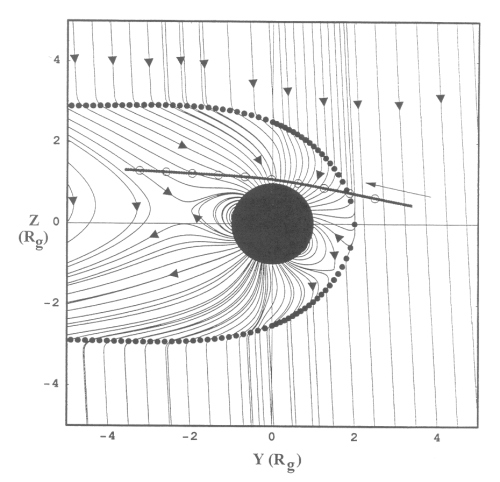
Figure 4.20 ZX projection field line tracing of the magnetic field in the region of Ganymede for the G2 encounter. The coordinates are given in the aberrated frame which is defined by a rotation about the GSII x axis by an angle of 10º, and then a rotation about the new z axis by -33º. The projection of the trajectory of Galileo is shown by the line with open circles. The first circle represents the position of Galileo at 18:40:00 with each consecutive circle separated by 5 minutes in time.

Figure 4.21 ZY field line tracing of the magnetic field in the region of Ganymede for the G2 encounter. The frame is given in GSII coordinates. The projection of the trajectory of Galileo is shown by the line with open circles. The first circle represents the position of Galileo at 18:40:00 with each consecutive circle separated by 5 minutes in time.
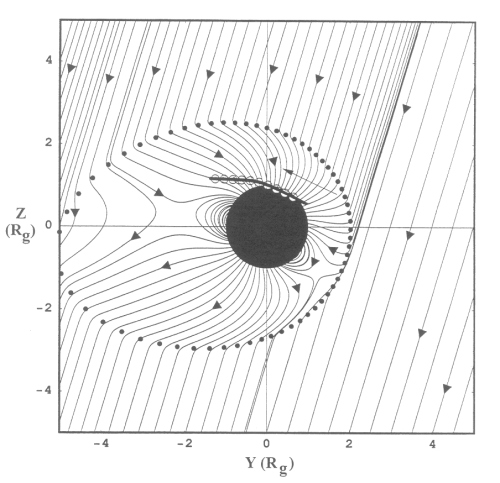
Figure 4.22 ZX field line tracing of the magnetic field in the region of Ganymede for the G2 encounter. The frame is given in GSII coordinates. The projection of the trajectory of Galileo is shown by the line with open circles. The first circle represents the position of Galileo at 18:40:00 with each consecutive circle separated by 5 minutes in time.

Figure 4.23 ZY projection field line tracing of the magnetic field in the region of Ganymede for the G7 encounter. The coordinates are given in the aberrated frame which is defined by a rotation about the GSII x axis by an angle of 30º, and then a rotation about the new z axis by 40º. The projection of the trajectory of Galileo is shown by the line with open circles. The first circle represents the position of Galileo at 06:50:00 with each consecutive circle separated by 5 minutes in time.
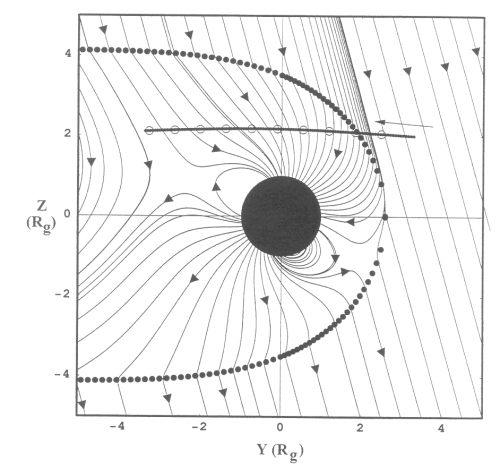
Figure 4.24 ZX projection field line tracing of the magnetic field in the region of Ganymede for the G7 encounter. The coordinates are given in the aberrated frame which is defined by a rotation about the GSII x axis by an angle of 30º, and then a rotation about the new z axis by 40º. The projection of the trajectory of Galileo is shown by the line with open circles. The first circle represents the position of Galileo at 06:50:00 with each consecutive circle separated by 5 minutes in time.
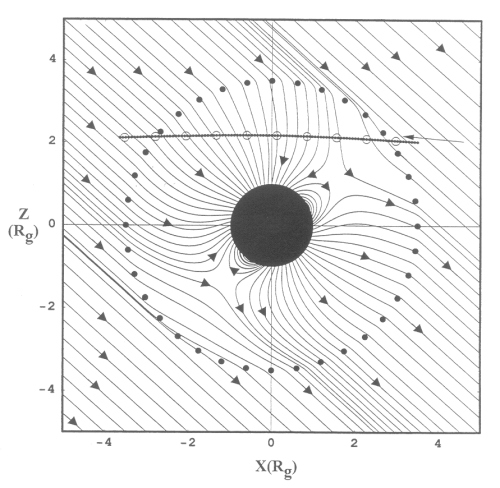
Figure 4.25 ZY field line tracing of the magnetic field in the region of Ganymede for the G7 encounter. The frame is given in GSII coordinates. The projection of the trajectory of Galileo is shown by the line with open circles. The first circle represents the position of Galileo at 06:50:00 with each consecutive circle separated by 5 minutes in time.

Figure 4.26 ZX field line tracing of the magnetic field in the region of Ganymede for the G7 encounter. The frame is given in GSII coordinates. The projection of the trajectory of Galileo is shown by the line with open circles. The first circle represents the position of Galileo at 06:50:00 with each consecutive circle separated by 5 minutes in time.
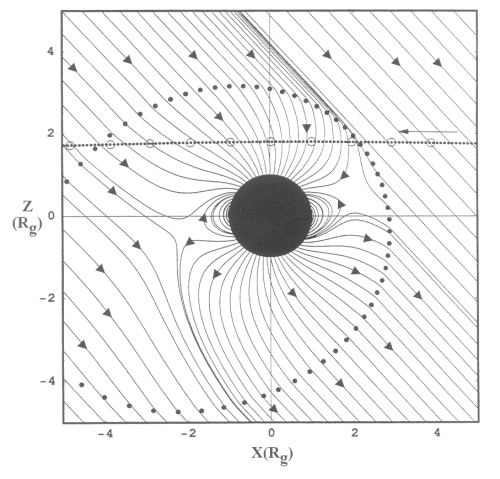
Return to dissertation table of contents page.
Return to main
Galileo Table of Contents Page.
Return to Fundamental
Technologies Home Page.
Updated 8/23/19, Cameron Crane
QUICK FACTS
Mission Duration: Galileo was planned to have a mission duration of around 8 years, but was kept in operation for 13 years, 11 months, and 3 days, until it was destroyed in a controlled impact with Jupiter on September 21, 2003.
Destination: Galileo's destination was Jupiter and its moons, which it orbitted for 7 years, 9 months, and 13 days.



